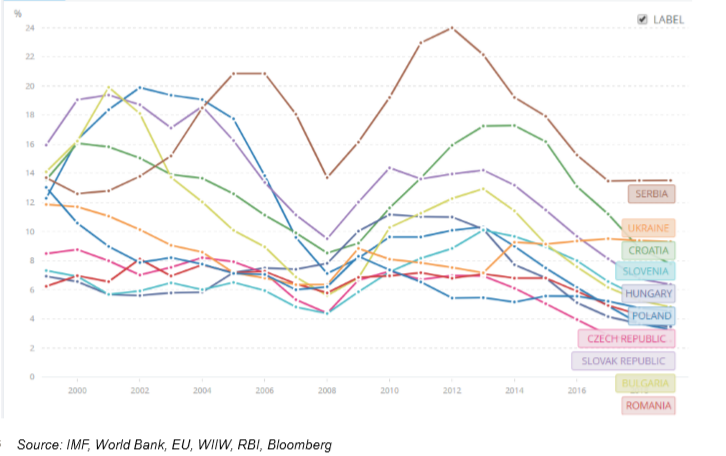COVID-19: What is the forecast for the unemployment rate in CEE?
On the other hand, we have the experience with two previous recessions, one at the turn of the century and another during 2008/9. What we have seen in the case of the more developed markets where the hit to the labor market came faster is the unprecedented negative development.
In the CEE the most significant negative impact on the labor market might be felt it the service sector, especially in restaurants, hotels and retail trade. Many of the measures resembling the payroll-subsidy scheme of Kurzarbeit might help to mitigate the extent of the negative impact of the current situation on the industry. However, due to its dependence on exports, the CEE industry will be hit significantly as well, which as a result might feed-though into the service sector as well.
As a result, the anticipated rebound of the unemployment rate might bring us back to somewhere between the peaks of 2008/9 and 2001. In the case of Poland in means levels of around 8-10 percent, in the case of Slovakia around 14 percent.
What needs to be added is, that the experience from 2008/9 has shown, that the recovery of the labor market was slow and lasted relatively long. In this case, we must take into account, that many of the jobs lost due to pandemics will not come back due to technological shifts and progress. Although the digitalization will create new jobs and new positions, the skills required for the newly created jobs might not be in such a good overlap with the skills of the workforce from older sectors and industries.
Unemployment rate in selected CEE countries

